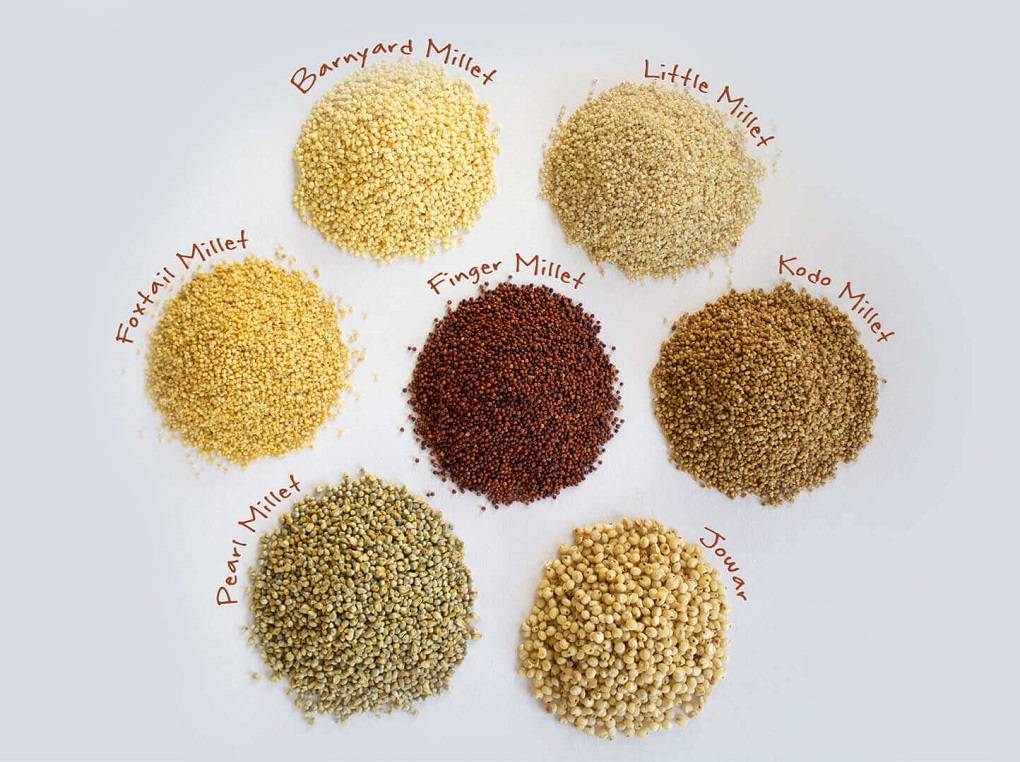
Millets are small-seeded grasses that are grown around the world as grains for fodder and human food. More than 90% of millet production takes place in Asian and African countries of India, Mali, Nigeria, and Niger. It is favoured as a cereal crop in many developing countries because of its high productivity, short growing season, and its ability to grow in dry, high-temperature weather conditions.
Millet is an important source of nourishment for millions of people in sub-Saharan Africa and Asia. For centuries, millet has been a part of the culture and traditions of indigenous people and even offered food security to them. Production of millet can support the livelihood of small landholding farmers and even provide jobs to women and youth.
According to the Director-General of Food and Agriculture Organization of the United Nations, Qu Dongyu, “Millets are incredible ancestral crops with high nutritional value. Millets can play an important role and contribute to our collective efforts to empower smallholder farmers, achieve sustainable development, eliminate hunger, adapt to climate change, promote biodiversity, and transform agrifood systems.”
Nutritional Value
Even though there are various types of millet, they have somewhat the same nutritional value. A cup or 100 grams of cooked millet has 207 calories, 41 grams of carbohydrates, 2.2 grams of fibre, 6 grams of protein, 19% of the daily value (DV) of magnesium, 25% of the DV of phosphorous, 13% of the DV of calcium, and 8% of the DV of folate.
Health Benefits of Millet
-
Controls blood sugar- Millet is rich in higher complex carbohydrates, which means it takes longer to digest standard wheat flour and is a low-glycemic index (GI) food. Food that has low-GI stops our blood sugar from spiking after eating.
-
Improves gut health- Millet is a great source of dietary fibre. Insoluble millet is also known as a probiotic and that means that millet keeps the good bacteria in our gut healthy. It also makes our bowel movement more regular and reduces the risk of colon cancer.
-
Lowers bad cholesterol- The high values of soluble fibre in millet can reduce the amount of LDL or “bad” cholesterol in the blood and absorbs cholesterol. There are other studies that also show that millet can raise HDL or “good” cholesterol levels.
Compared to other commonly grown cereals such as rice, corn, or wheat, it is possible to grow millets under drought-like conditions and in uneven non-irrigated conditions. It has a low water footprint. Millet also has a high carbon content and it helps maintain and even increase soil carbon levels.
Steps taken by Centre to promote production of millet
Since 2018 the Indian Government has taken many steps to promote the production of millet.
-
Millets are included by the Ministry of Women and Child Development under Poshan Mission Abhiyan.
-
The Government of India has hiked the Minimum Support Price of Millet to incentivize its production for farmers.
-
In order to provide a steady market for millet, the government has also included it in the public distribution system.
-
The government has also encouraged the marketability of millets by building value chains through Farmer Producer Organization.
Prime Minister’s message on the declaration
On the occasion of 2023 being declared as the International Year of Millets, Prime Minister Narendra Modi said, “Millets are good for the consumer, cultivator and climate. They are a rich source of balanced nutrition for consumers. They benefit cultivators and our environment since they need lesser water and are compatible with natural ways of farming.”
He added “Raising awareness to create 'Millet Mindfulness' is an important part of this movement. Both institutions and individuals can make a tremendous impact. While institutional mechanisms can encourage production of millets and make it profitable via policy initiatives, individuals can make health-conscious and planet-friendly choices by making millets a part of their diet.”
















